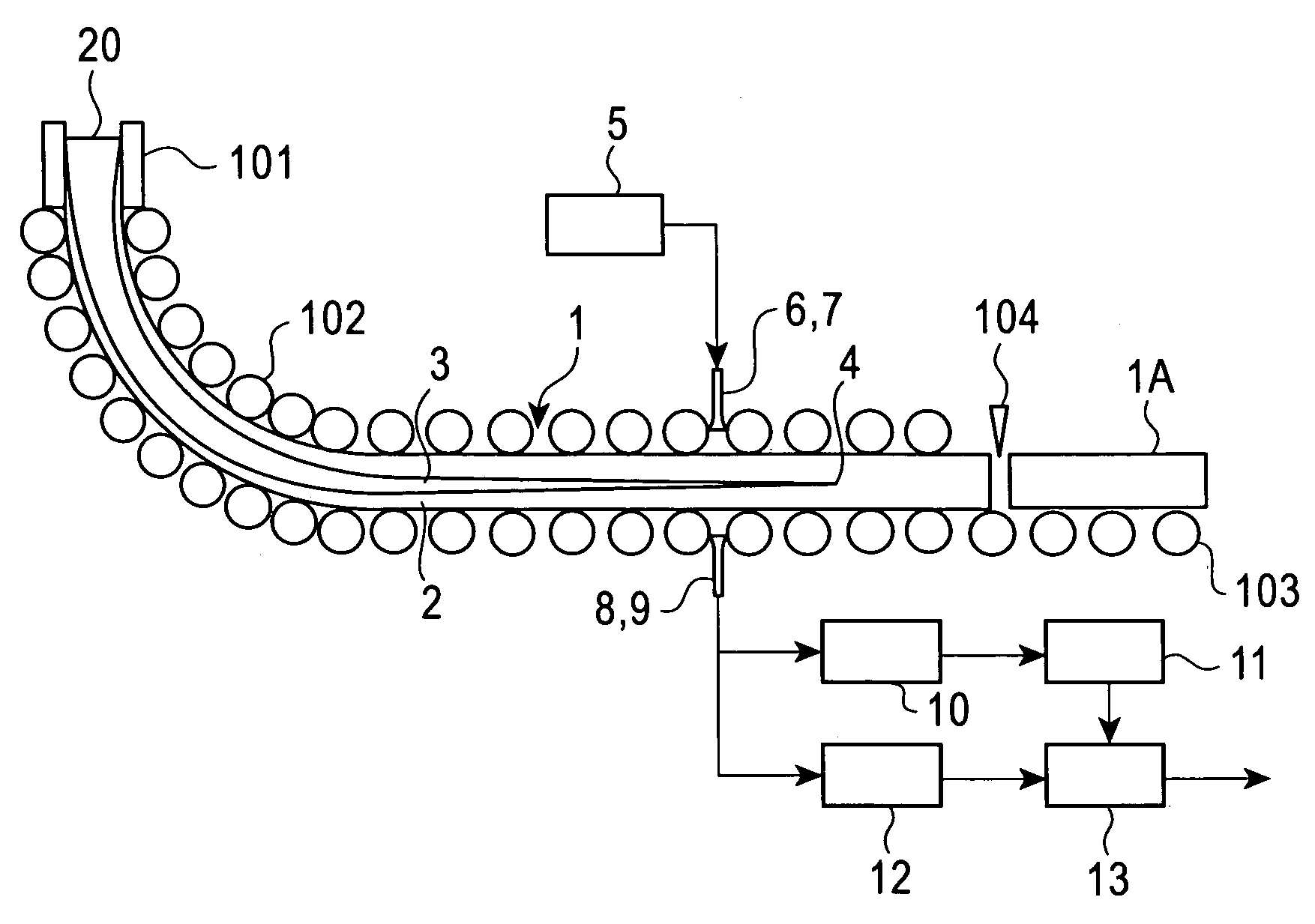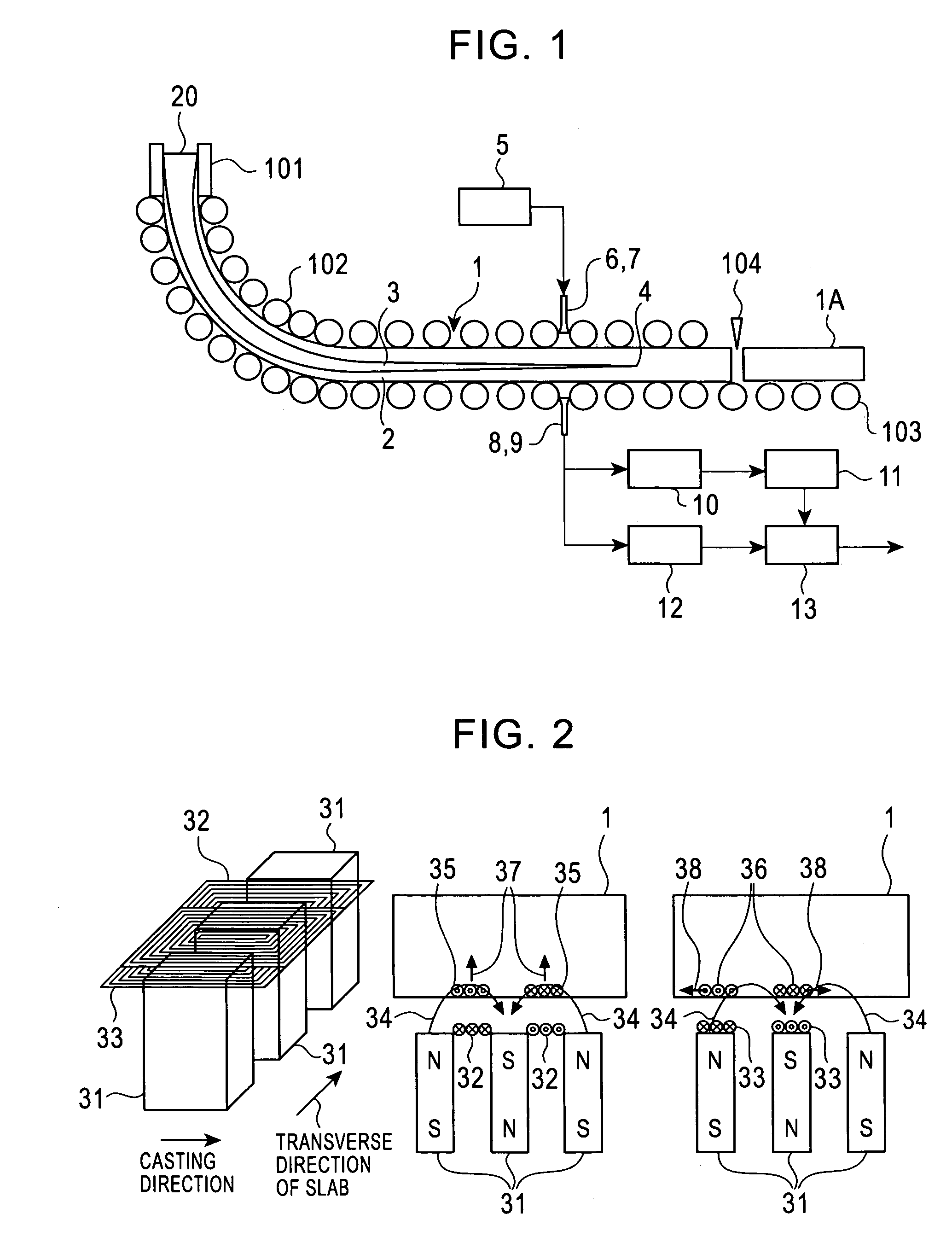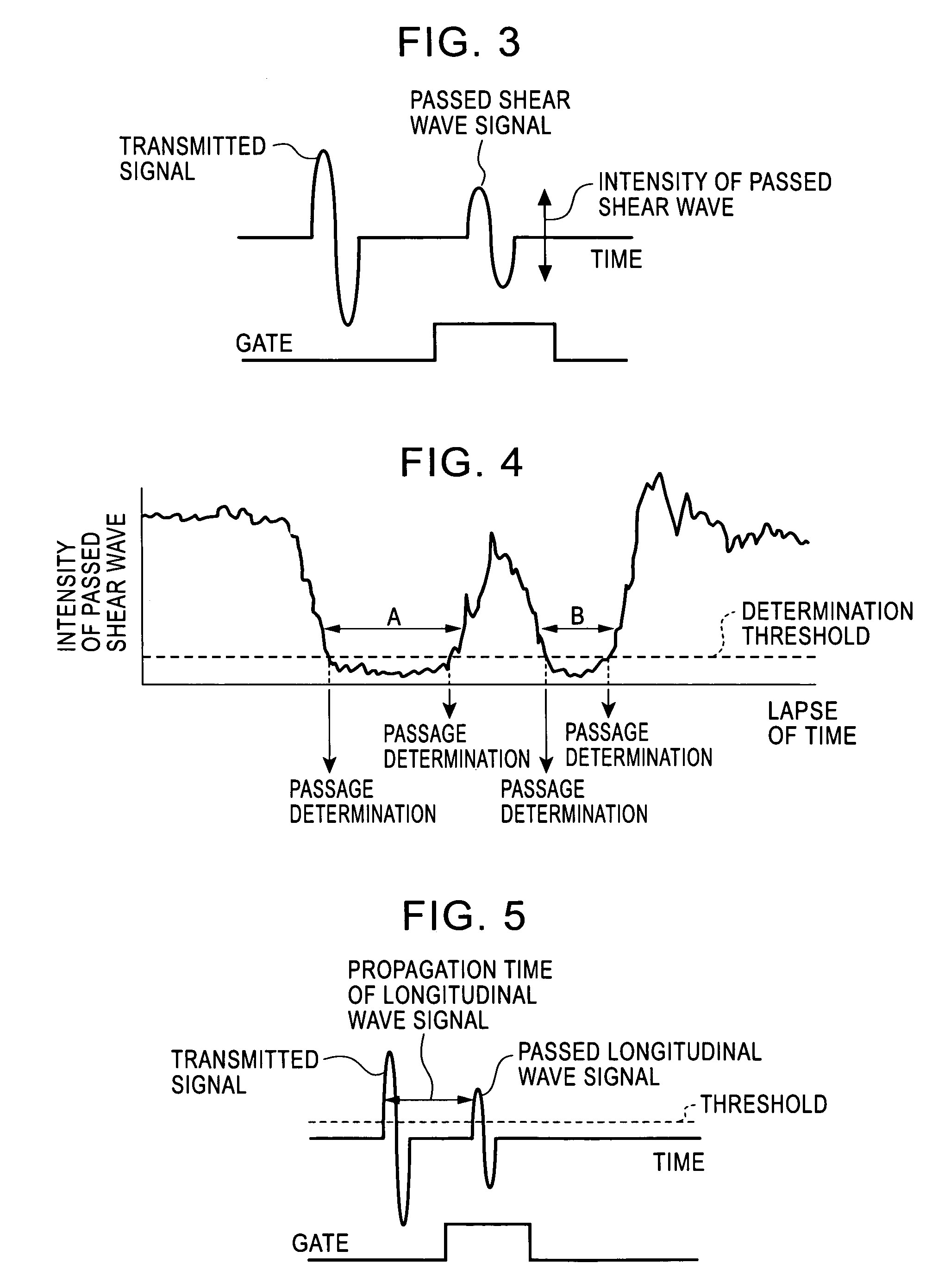Method and apparatus for detecting crater end of continuously cast product, and method for producing continuously cast product
a technology of continuous casting and crater end, which is applied in the direction of manufacturing tools, instruments, and foundation moulding equipment, can solve the problems of difficult to perform riveting methods for all varieties of chemical components, known methods, and high cost, and achieves superior absolute measurement, superior relative measurement accuracy, and high accuracy.
- Summary
- Abstract
- Description
- Claims
- Application Information
AI Technical Summary
Benefits of technology
Problems solved by technology
Method used
Image
Examples
first embodiment
[0069]The present invention will be described in detail below with reference to the accompanying drawings. A method and apparatus for directly detecting a crater end from the propagation time of an ultrasonic longitudinal wave signal measured by an ultrasonic longitudinal wave sensor will be first described. FIG. 1 shows the present invention related to the method and apparatus for directly detecting the crater end from the propagation time of the ultrasonic longitudinal wave signal measured by the ultrasonic longitudinal wave sensor. In other words, FIG. 1 is a schematic view of a slab continuous casting machine provided with a crater end detector according to the present invention, in which an ultrasonic shear wave sensor and the ultrasonic longitudinal wave sensor are installed at the same position in the continuous casting machine.
[0070]In FIG. 1, reference numeral 1 denotes a cast product (slab), 2 denotes a solid phase, 3 denotes a liquid phase, and 4 denotes a crater end. Mol...
second embodiment
[0099]In the second embodiment, as shown in FIG. 8, the ultrasonic shear wave sensor made up of the ultrasonic shear wave transmitter 6 and the ultrasonic shear wave receiver 8 and the ultrasonic longitudinal wave sensor made up of the ultrasonic longitudinal wave transmitter 7 and the ultrasonic longitudinal wave receiver 9 are separately disposed in two points apart from each other in the casting direction. In this case, the ultrasonic shear wave sensor and the ultrasonic longitudinal wave sensor are not required to be the above-described sensor for generating and detecting the ultrasonic longitudinal wave and the ultrasonic shear wave at the same position, shown in FIG. 2, and can be each constituted as an ordinary electromagnetic ultrasonic sensor. Of course, the electromagnetic ultrasonic sensor shown in FIG. 2 can also be employed.
[0100]However, since the crater end 4 sometimes differs in the transverse direction of the slab 1 in the slab continuous casting machine, the ultras...
fourth embodiment
[0114]The method and apparatus for detecting the crater end from the casting conditions and the values of physical properties by calculation based on the heat condition equation will be described below. FIG. 11 shows the present invention, and it is a schematic view of a slab continuous casting machine provided with a crater end detector according to the present invention.
[0115]The crater end detector according to the present invention for detecting the crater end 4 from the casting conditions and the values of physical properties by calculation based on the heat condition equation comprises, as shown in FIG. 11, an ultrasonic shear wave sensor made up of an ultrasonic shear wave transmitter 6 and an ultrasonic shear wave receiver 8 disposed in opposed relation with a slab 1 between them, an ultrasonic transmitting unit 5 which is an electric circuit for supplying an electric signal to the ultrasonic shear wave transmitter 6, thereby causing an ultrasonic wave to be transmitted to t...
PUM
| Property | Measurement | Unit |
|---|---|---|
| magnetic field | aaaaa | aaaaa |
| current | aaaaa | aaaaa |
| voltage | aaaaa | aaaaa |
Abstract
Description
Claims
Application Information
 Login to View More
Login to View More - R&D
- Intellectual Property
- Life Sciences
- Materials
- Tech Scout
- Unparalleled Data Quality
- Higher Quality Content
- 60% Fewer Hallucinations
Browse by: Latest US Patents, China's latest patents, Technical Efficacy Thesaurus, Application Domain, Technology Topic, Popular Technical Reports.
© 2025 PatSnap. All rights reserved.Legal|Privacy policy|Modern Slavery Act Transparency Statement|Sitemap|About US| Contact US: help@patsnap.com



